#ladwp
Explore tagged Tumblr posts
Text





Overhead views of Owens Lake and the LADWP’s efforts to remediate the mess they’ve made of the area over the past century or so (the LADWP is the saintly Los Angeles Department of Water and Power). It's difficult to get a feel for the sheer scale of this mess and the long-term damage done to Owens Valley and beyond, but take a look at my The Owens Lake Partial Remediation Effort photo essay for a slightly more comprehensive view.
42 notes
·
View notes
Text
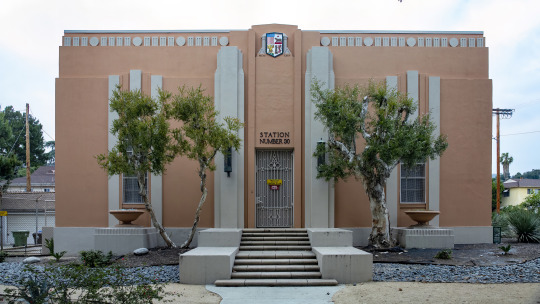
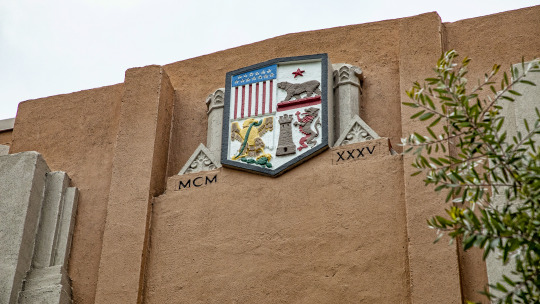
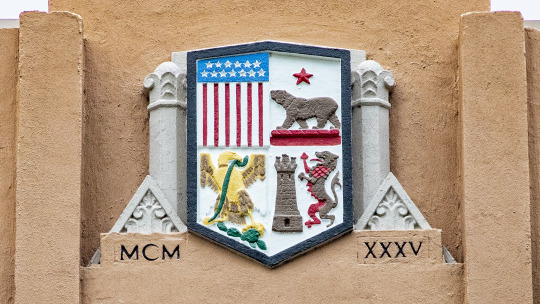


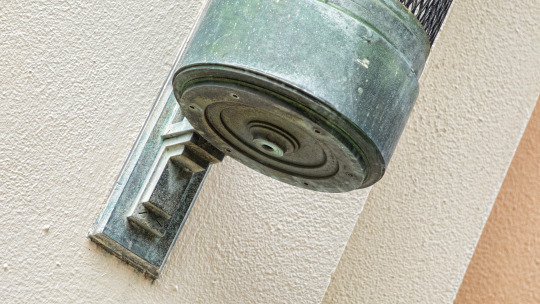
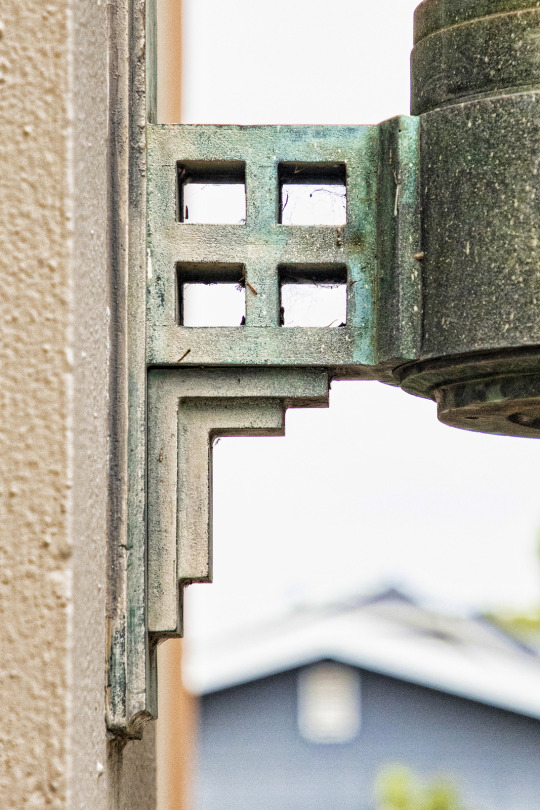

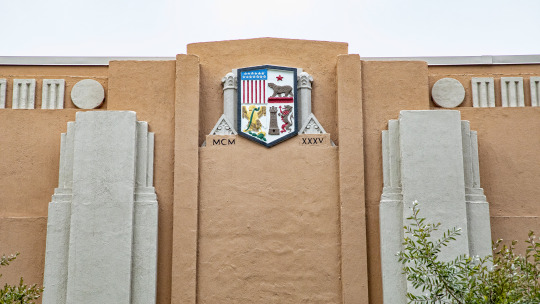
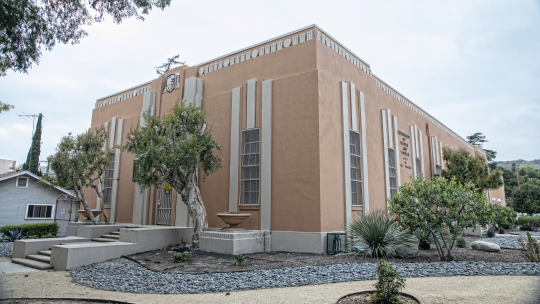
Los Angeles Department of Water & Power [LADWP] Distribution Station 30 in the Eagle Rock neighborhood of Los Angeles. 4905 Maywood. #EagleRock#ArtDeco#LADWP#LosAngeles#TakeMeDownToLA. Photos taken May 28, 2023. MCMXXXV = 1935
71 notes
·
View notes
Text

Homes burning as 2,920-acre wildfire spreads in Pacific Palisades amid strong windstorm
#latimes#sce#power outage los angeles#edison power outage#power outage#ladwp#edison#ladwp power outage#fire watch#santa ana#southern california edison#lausd#fire.ca.gov#southern california windstorm#gale warning
1 note
·
View note
Text
West LA’da Elektrik Kesintisi! Sebebi Şaşırtıyor! Metalik Balonlar
West Los Angeles’ta yaşanan elektrik kesintisinin sebebi şaşırttı. LADWP, kesintiye elektrik hatlarına takılan metalik balonların neden olduğunu açıkladı. Olayın Detayları West Los Angeles’ta bugün yaşanan ani elektrik kesintisi, bölge sakinlerini şaşırttı. Elektrikler gitmeden önce birçok kişi patlama benzeri sesler duyduğunu bildirdi. Los Angeles Su ve Enerji İdaresi (LADWP), kesintinin…
0 notes
Text
Jose Mier Looks at Sun Valley, CA Generating Station
Jose Mier, Sun Valley, CA man about town, take a look at the iconic (if still obscure) LADWP power generating station located in our community. LADWP power station in Sun Valley, CA Jose Mier The Valley Generating Station, operated by the Los Angeles Department of Water and Power (LADWP) in Sun Valley, CA, plays a key role in supplying reliable energy to Los Angeles. This natural gas-powered…
0 notes
Text
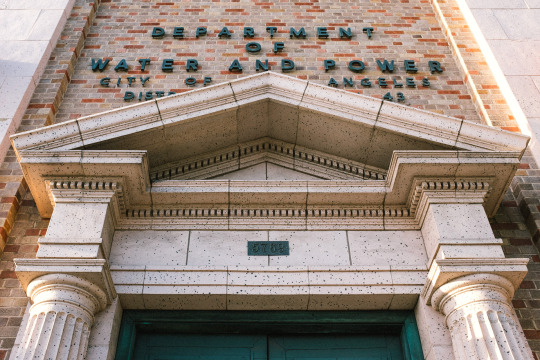
Water and Power Los Angeles, CA 2024
0 notes
Text
after going thru a long and confusing ordeal trying to declare a history minor and failing, i can take it as a good thing
#really wanna learn more about california history because i dont really know much outside my general fascination w 60s musicians and#hollywood history and things i learned in Literally elementary school along with tidbits i know about#and also valley history that i just researched on my own bc i drive by something interesting and want to learn abt it#ill start checking libraries for any related material but i wanna just start by watching videos/documentaries and reading articles and#websites. the ladwp actually has a lot of information on kind of a digital museum its rly cool!#need to graduate from wiki articles and 90s websites about very niche valley things to published works#but i gotta start somewhere and id really like to go back to things i found interesting and take notes
1 note
·
View note
Text
As relentless rains pounded LA, the city’s “sponge” infrastructure helped gather 8.6 billion gallons of water—enough to sustain over 100,000 households for a year.
Earlier this month, the future fell on Los Angeles. A long band of moisture in the sky, known as an atmospheric river, dumped 9 inches of rain on the city over three days—over half of what the city typically gets in a year. It’s the kind of extreme rainfall that’ll get ever more extreme as the planet warms.
The city’s water managers, though, were ready and waiting. Like other urban areas around the world, in recent years LA has been transforming into a “sponge city,” replacing impermeable surfaces, like concrete, with permeable ones, like dirt and plants. It has also built out “spreading grounds,” where water accumulates and soaks into the earth.
With traditional dams and all that newfangled spongy infrastructure, between February 4 and 7 the metropolis captured 8.6 billion gallons of stormwater, enough to provide water to 106,000 households for a year. For the rainy season in total, LA has accumulated 14.7 billion gallons.
Long reliant on snowmelt and river water piped in from afar, LA is on a quest to produce as much water as it can locally. “There's going to be a lot more rain and a lot less snow, which is going to alter the way we capture snowmelt and the aqueduct water,” says Art Castro, manager of watershed management at the Los Angeles Department of Water and Power. “Dams and spreading grounds are the workhorses of local stormwater capture for either flood protection or water supply.”
Centuries of urban-planning dogma dictates using gutters, sewers, and other infrastructure to funnel rainwater out of a metropolis as quickly as possible to prevent flooding. Given the increasingly catastrophic urban flooding seen around the world, though, that clearly isn’t working anymore, so now planners are finding clever ways to capture stormwater, treating it as an asset instead of a liability. “The problem of urban hydrology is caused by a thousand small cuts,” says Michael Kiparsky, director of the Wheeler Water Institute at UC Berkeley. “No one driveway or roof in and of itself causes massive alteration of the hydrologic cycle. But combine millions of them in one area and it does. Maybe we can solve that problem with a thousand Band-Aids.”
Or in this case, sponges. The trick to making a city more absorbent is to add more gardens and other green spaces that allow water to percolate into underlying aquifers—porous subterranean materials that can hold water—which a city can then draw from in times of need. Engineers are also greening up medians and roadside areas to soak up the water that’d normally rush off streets, into sewers, and eventually out to sea...
To exploit all that free water falling from the sky, the LADWP has carved out big patches of brown in the concrete jungle. Stormwater is piped into these spreading grounds and accumulates in dirt basins. That allows it to slowly soak into the underlying aquifer, which acts as a sort of natural underground tank that can hold 28 billion gallons of water.
During a storm, the city is also gathering water in dams, some of which it diverts into the spreading grounds. “After the storm comes by, and it's a bright sunny day, you’ll still see water being released into a channel and diverted into the spreading grounds,” says Castro. That way, water moves from a reservoir where it’s exposed to sunlight and evaporation, into an aquifer where it’s banked safely underground.
On a smaller scale, LADWP has been experimenting with turning parks into mini spreading grounds, diverting stormwater there to soak into subterranean cisterns or chambers. It’s also deploying green spaces along roadways, which have the additional benefit of mitigating flooding in a neighborhood: The less concrete and the more dirt and plants, the more the built environment can soak up stormwater like the actual environment naturally does.
As an added benefit, deploying more of these green spaces, along with urban gardens, improves the mental health of residents. Plants here also “sweat,” cooling the area and beating back the urban heat island effect—the tendency for concrete to absorb solar energy and slowly release it at night. By reducing summer temperatures, you improve the physical health of residents. “The more trees, the more shade, the less heat island effect,” says Castro. “Sometimes when it’s 90 degrees in the middle of summer, it could get up to 110 underneath a bus stop.”
LA’s far from alone in going spongy. Pittsburgh is also deploying more rain gardens, and where they absolutely must have a hard surface—sidewalks, parking lots, etc.—they’re using special concrete bricks that allow water to seep through. And a growing number of municipalities are scrutinizing properties and charging owners fees if they have excessive impermeable surfaces like pavement, thus incentivizing the switch to permeable surfaces like plots of native plants or urban gardens for producing more food locally.
So the old way of stormwater management isn’t just increasingly dangerous and ineffective as the planet warms and storms get more intense—it stands in the way of a more beautiful, less sweltering, more sustainable urban landscape. LA, of all places, is showing the world there’s a better way.
-via Wired, February 19, 2024
#california#los angeles#water#rainfall#extreme weather#rain#atmospheric science#meteorology#infrastructure#green infrastructure#climate change#climate action#climate resilient#climate emergency#urban#urban landscape#flooding#flood warning#natural disasters#environmental news#climate news#good news#hope#solarpunk#hopepunk#ecopunk#sustainability#urban planning#city planning#urbanism
14K notes
·
View notes
Text
「宮崎正弘の国際情勢解題」
令和七年(2025年)1月15日(水曜日)弐
通巻第8600号
「大火災に対応無能だった加州知事とLA市長は辞任せよ」(トランプ)
ウクライナのミサイルで破壊された現場より悲惨
*************************
2025年1月10日、トランプ次期大統領は自らのSNS「トゥルース・ソーシャル」で「ロスの火災は急速に広がり、鎮火はゼロ。これほどの失敗を見たことがない! ギャビン・ニューサム州知事とカレン・バスLA市長は全くの無能だ。LAは全滅だ。米国で最も素晴らしく美しい場所の一つが焼け落ち、灰になった。ニューサムは辞めるべきだ」と非難した。
州知事とLA市長はコンビを組んで現場を視察しているが、現場はテレビ向けパフォーマンスにうんざりしている。のっぽの白人とちびの黒人女性の不釣り合いな風景は災害救助という印象の演出が出来ないようだ。
カレン・バスLA市長は、山火事に強風���加わると、カリフォルニアの乾燥した丘陵地帯危険に陥るという警告を受けていた。しかしこの老婆は聞く耳を持たず、アフリカのガーナへ「視察旅行」に出かけた。災禍対策をそっちのけでの物見遊山には市民から抗議の声があがった。
「視察先のガーナには消防の専門家がいるのか?」と。バス市長がガーナに行った理由は「アイデンティティー・ショービニズム」だとする批判もあった。
急遽、帰国した彼女を待ち構えていた記者団は「ロサンゼルス消防署の予算から1,760万ドル以上を削減した理由」を問いただした。回答がなかった。
彼女が掲げたDEIに共鳴した住民達が、ものごとを深く考えないで投票したが、彼女の人事や予算を見れば、いかに公共の安全、火災、水問題が、彼女の市政の優先事項ではないことが分かる。
市長権限で、バスが任命したDEIの「安全担当副市長」=ブライアン・ウィリアムズは現在、ロサンゼルス市役所に爆破予告の電話をかけた疑いで停職処分を受けている。つまり活動家を副市長に任命したのだ。
広大な水道事業体の DEI および「初のラテン系」の局長は給与を2 倍の年間 75 万ドルに引き上げ、採用した。
ロサンゼルス水道電力局(LADWP)のCEO兼主任エンジニアであり、同局を率いる女性は初のラテン系。そのジャニス・キニョネスCEOが何をしたかと言えば、消火用のため池の水がすぐに無くなり、貯水池の管理を放置し、予防策を重視しなかった。このため山火事の蔓延となった。
もともとウィリアム・マルホランドが河川や貯水池を活用して、水需要を満たし、人口1,800万人の巨大都市ロサンゼルスを創り上げたのだが、先人たちの努力を、これら赤い州知事、市長、水道、消防責任者らが破損した。
▼それにしても、よくぞこれほどの無能を人事のトップに据えたものである
消防署長のクリステン・クロウリーは「消火栓が乾いているのは市長のせいだと」非難している。消火栓が動かない状態は彼女の関心事ではなく、つねに口を開けば、「多様性、公平性、包摂性」と「LGBTQコミュニティ」についてのみ多弁だった。
機能的な消化部隊、装備の充実と防災への取り組みに関しては語らなかった。
カリフォルニア州議会の議長ロバート・リバスは、ギャビン・ニューサム知事とともに、カリフォルニア州の「トランプ対策」のため、特別会議を招集した。
ニューサム知事は環境、森林保護に極左的劇薬で対応し、結局、環境を破壊した。
森林火災が多発し、水が不足し、木材産業を復活させて森林の伐採と清掃を行うための予算はつけなかった。新たな放牧をほとんど許可せず、低木林を伐採するために作業員を派遣することもなかった。(知事は消防予算を二倍にしたし、森林対策予算は10倍にしたと反論した)
カリフォルニア州の公職者がすべて左派である事実は絶望の近未来しかない。州議会の両院では民主52 議席に対して共和党はわずか 17 パーセントだ。
カリフォルニア州の司法当局も極左がほぼ独占し、ロサンゼルス市議会に共和党議員はゼロ!
農地への灌漑工事、ロサンゼルス郡の貯水池の完成をいそがず、サクラメント川の支流から貴重な雪解け水を海に流してデルタ地帯のワカサギを助けるという政策に傾斜した。
人の命よりワカサギや蛸が大事だからだ。
干ばつを防ぐにはダム、貯水湖、ため池の建設だろう。
ところが、ニューサム知事は、三つのダム建設、貯水池建設予算が成立したにも拘わらず貯水池を建設しなかった。ニューサム知事は、むしろ貯水池を爆破し、流れ出した泥洪水は、周囲の河川沿いの生態系を壊滅させた。
DEIと過剰な自然保護という過激思想が大惨事をもたらした。
▼DRILL BABY DRILL
トランプ大統領は「エネルギー優位」の大統領令を計画している。
次期大統領は、石油の増産と排気ガス規制の撤廃を目指し、化石燃料産業を支援する準備を整えている。次期政権は米国の石油、天然ガス、電力政策を監督する国家エネルギー委員会を設置する予定である。
「石油、天然ガス、電力政策を監督する国家エネルギー委員会」設立により化石燃料の発掘プロジェクトの促進をはかり、一方でEV推進政策の基本方針を撤回する。
就任後、トランプ大統領はバイデン前政権が残していった「沖合および連邦所有地での掘削制限」の解除を決める手はずである。これはレイムダックのバイデンが火事場泥棒のように残置した愚策である。
13 notes
·
View notes
Text

Explainer
The unprecedented conditions firefighters are facing in LA
Fire crews are facing dire challenges, hurdles that have intensified the fires and are complicating the response
As multiple fires rage around the Los Angeles basin, the 7,500 fire and emergency personnel on the ground are facing unprecedented conditions.
At least five LA residents have been killed, and the death count is expected to rise as responders search burned areas. At least 10,000 structures have been destroyed, and several of the five blazes are still burning out of control.
“This is what our crews train for,” Capt Adam VanGerpen of the Los Angeles fire department told local news. “We’re used to keeping long hours. What’s keeping us going is there’s work to do. There are still homes on fire, there are people being evacuated. We’re just at the beginning stages of this.”
Fire crews are facing dire challenges, hurdles that have intensified the fires and are complicating the response.
Whipping winds
Hurricane-force winds peaked at 100mph in some areas of the LA basin during the week. Most of the mountain areas remain under a red-flag warning, indicating that any fires that start will spread rapidly. High winds stopped scooper planes and helicopters from dropping water on the fires on Tuesday night, and may do so in the future. But they can also disperse dropped water in all directions, instead of allowing it to drop on flames.
In addition, winds blow embers into new areas. Dry desert air from the east – which is not normal this time of year – has been fanning the flames while blowing over hilltops and down through the canyons. That makes the job of containing a fire much harder.
“This wildfire was the most chaotic winds I’ve experienced in 20 years,” Capt Erik Scott, a Los Angeles fire department spokesperson, said about the Palisades blaze, the largest of the fires.
“These were the chaotic winds that we were absolutely worried would create the explosive fire behavior that we do have,” Scott said. “It’s not just the flame fronts that take out houses. It’s the ember cast that can fly a mile or two in front and will land on a property or go in somebody’s attic and burn homes from the top down.”
In addition, low humidity sucks water from grasses and trees, making them more susceptible to fire.
Dry hydrants
When firefighters turned on hydrant valves in parts of the Pacific Palisades neighborhood to fight blazes on Tuesday night, they found low water pressure – or, in some cases, dry hydrants. The Los Angeles department of water and power (LADWP) was pumping from aqueducts and groundwater, but demand outpaced supply in the 1m-gallon tanks, leading to low water pressure.
LA mayor Karen Bass estimated that 20% of hydrants ran dry in the Pacific Palisades, where more than 1,000 structures have been lost. Hydrants are designed for fighting one or two fires at a time – not hundreds of buildings and homes on fire.
Three million gallons of water were available when the Palisades fire started, said Janisse Quiñones, head of LADWP, later at a news conference. But the demand had been four times greater than “we’ve ever seen in the system”.
Personnel
There are 9,000 firefighters in Los Angeles county between the county’s fire department and other fire agencies, which is not sufficient to address all the fires in the region, according to fire officials. With local firefighting capacity close to the maximum, authorities are calling on outside help to battle the blazes.
Anthony Marrone, the LA county fire department chief, said on Wednesday that all 29 county fire departments are at “a drawdown, with no fire apparatus or additional personnel to spare.”
LAFD put out notice of a “recall operation”, asking all off-duty crews to report their availability to assist in firefighting – the first time in 19 years the department has had to turn to this protocol.
Other parts of the region are stepping in to help. Crews from Alameda county, Oakland, Hayward and Fremont fire departments were sent to help. Arizona, Nevada, Washington and Oregon sent teams to assist as well.
Roadblocks
Hundreds of cars were left blocking Palisades Drive and Sunset Boulevard, two of the main corridors in and out of Pacific Palisades. As people abandoned their cars and fled on foot, first responders were forced to push more than 200 cars aside with bulldozers so firefighting crews could drive up the hill to houses in danger.
Daily inspiration. Discover more photos at Just for Books…?
#just for books#Los Angeles#California wildfires#US wildfires#California#West Coast#Wildfires#explainer
11 notes
·
View notes
Text
The LADWP hold music is so good that I actually asked to be put back on hold so I could record it. It legit sounds like Donkey Kong Country.
35 notes
·
View notes
Text
Palisades Fire ‘Crime Scene’. MAUI 2.0. Trump Plans to End the IRS. Trump’s going to WEF Davos 2025. S. Korea’s president detained. Pezeshkian: Iran never plotted to kill Trump. Mark Zuckerberg Lied.
Lioness of Judah Ministry
Jan 15, 2025
Return Of Strong Winds Spark "Dangerous Situation" Across Fire-Ravaged Palisades
One week after the fires in Los Angeles County began, the blazes remain out of control, scorching nearly 40,000 acres and leveling entire neighborhoods.
On Tuesday, winds are expected to gust between 45 and 70 mph, accompanied by dry air, significantly increasing the risk of fire spread. The National Weather Service has issued "Particularly Dangerous Situation Red Flag Warnings" for L.A. and Ventura counties through Wednesday evening, warning that "this setup is about as bad as it gets." Strong gusts could derail any progress made by firefighters early this week across two of the main fires, the Palisades and Eaton fires. The blazes have burned upwards of 40,000 and leveled entire neighborhoods and burned more than 12,000 structures. At least 24 people have died, with the death toll expected to rise.
Palisades Fire ‘Crime Scene’ Gives Clues to Inferno’s Origin
Investigators trying to trace the origin of a Los Angeles County wildfire that is devastating parts of America’s second-largest city believe it may have originated in a known hiking area.
Authorities have taped off a ridge overlooking Los Angeles as they investigate the origin of the Palisades Fire, describing the area as a “crime scene.” The wildfire, which caused the destruction of thousands of homes and businesses and claimed at least eight lives, remains uncertain. However, investigators are scrutinizing the site for clues, as evidenced by the police tape. Dominic Choi, the assistant Los Angeles police chief, says “there has been no definitive determination that it is arson”—but he has not ruled it out.
Wildfire Woes: California Regulators Halted Palisades Fire Prevention Project to Save Rare Shrub
Nearly 24,000 acres - including much of Topanga Canyon - have gone up in smoke...
California’s eco-regulators halted a critical wildfire prevention project near Pacific Palisades to protect an endangered shrub - only for that same area to be engulfed in flames during the Palisades Fire, the most destructive blaze in Los Angeles history. In 2019, the LA Department of Water and Power (LADWP) set out to replace aging wooden power poles - some nearly a century old - with fire-resistant steel poles and widen fire-access lanes in the wildfire-prone Topanga State Park. The $2 million project was designed to bolster fire safety after the area was deemed an "elevated fire risk."
MAUI 2.0: They just admitted LA Fires are a carbon copy of Lahaina
Trump Announces Plan to End the IRS
President-elect Donald J. Trump announced he intends to create a new revenue agency that will effectively end the need for the Internal Revenue Service (IRS), which oversees the federal taxation of Americans.
Instead, the President-elect proposes an External Revenue Service (ERS), which will serve as the central point for collecting tariffs, duties, and other taxes and fees on foreign goods. This revenue source, he believes, will supplant the need for the federal income tax. “For far too long, we have relied on taxing our Great People using the Internal Revenue Service (IRS). Through soft and pathetically weak Trade agreements, the American Economy has delivered growth and prosperity to the World, while taxing ourselves.
7 notes
·
View notes
Text
Filoni! Turn on the f**kin' lights!

Brightened it.
I do not get the trend of shooting everything lit like the studio didn't pay the LADWP for the past six months.
80 notes
·
View notes
Text
Get 'em! Spencer Pratt and Heidi Montag...
2 notes
·
View notes
Text
In the wake of the Los Angeles wildfires, many people—including city officials—described the aftermath as being like a bomb had detonated. Not only have buildings been destroyed, but underground, melted plastic and a slurry of ash and debris threaten to end up in the maze of pipes that transport fresh drinking water, contaminating the municipal water supply.
Residents in affected areas have been placed under unsafe water advisories, being instructed not to drink the tap water until further notice. How long drinking water will remain unsafe for residents is still unclear, says Faith Kearns, scientist and director of research communications with the Arizona Water Innovation Initiative at Arizona State University. Drinking contaminated water in fire-affected areas could lead to waterborne illness, like the intestinal infection Giardia, or result in long-term health consequences from exposure to cancer-causing chemicals.
Initially, the Los Angeles Department of Water and Power (LADWP) issued a “boil water” advisory on Wednesday January 8 that allowed residents in fire-affected and fire-adjacent areas to drink water after boiling it. By Friday, however, it was upgraded to a “Do Not Drink” alert. While boiling water kills viruses and bacteria, it will not protect against common chemical contaminants often introduced during wildfires, says Daniel McCurry, associate professor of civil and environmental engineering at the University of Southern California.
According to the City of Pasadena, where the Eaton Fire is burning, you should not try to treat the water yourself. “Boiling, freezing, filtering, adding chlorine or other disinfectants, or letting water stand will not make the water safe to drink,” reads the alert. The advisory also warns residents not only to avoid drinking the water, but to limit hot water activities such as bathing, dishwashing, and laundry, which can release chemicals into the air.
“If your region is under a Do Not Drink advisory, it’s probably because some part of the water distribution system has burned,” says McCurry. Burned components can introduce volatile organic compounds (VOCs) and other harmful chemicals into the water supply. The severity of these issues will depend on how much physical damage the water infrastructure has endured. “These fires aren’t even out yet, so it’s a very dynamic situation,” Kearns says.
Vulnerable parts of the water system include the plastic components in water meters, pipes, gaskets, and storage tanks. This plastic is largely made up of polyvinyl chloride—PVC—and contains VOCs that are known to cause cancer if released. The most well-known is benzene, but dozens of equally harmful chemicals could enter the system depending on the material that’s breaking down. Once the plastic melts, these chemicals leach directly into the water and evaporate into the air.
Although experts haven’t confirmed VOC contamination in Los Angeles yet, because it’s too early for workers to perform testing in burned areas, past fires—like the Tubbs Fire in Santa Rosa, California and the Lahaina Fire in Maui, Hawaii—suggest that it’s highly likely. “In recent years, we’ve seen that fires are burning so hot that they will melt plastic piping,” says Kearns. “With structure destruction and depressurization, the water utilities likely have contamination,” adds Andrew Whelton, associate professor of civil, environmental, and ecological engineering at Purdue University, who frequently consults with municipalities across the country about wildfire water response.
Depressurization, the other big contributor to contamination, occurs when firefighting efforts draw massive amounts of water from the system in a short period. “A water line that connects to a house can generally put out about 9 gallons per minute,” says Whelton.“Firefighters can draw 500 gallons or up to 1,500 gallons of water per minute. So if you were to run five or six pumper trucks off of a water line, you’re looking at thousands of gallons of water being extracted from the water system in a very short period.”
When that happens, water pressure plummets, and the system becomes vulnerable to bacteria or chemicals entering the system from the surrounding environment. Usually, the high pressure of the water inside the system prevents any outside contaminants—such as soil or groundwater—from being able to find their way inside the system’s components.
Structural damage from fires can also result in pressure losses, says Whelton. In the case of large-scale fires like the Palisades or Eaton fires, you can have huge volumes of water dumping, uncontrolled, out of the system, due to pipes and other parts of the system being ruptured. Where there is damage, smoke and debris can be sucked into the water system, while damaged sewage lines can leak into the drinking water pipes that run nearby. “When the water system utility starts to try to repressurize, they start pushing that contaminated water through the infrastructure again,” says Whelton.
During the Marshall Fire in Louisville, Colorado in 2021, which burned over 1,000 homes, city officials advised residents to use mains water only for flushing until extensive testing confirmed safety. Given that over 12,000 structures have burned in Los Angeles as of Monday morning, the potential of widespread contamination is significant, Kearns warns.
The coming days and weeks will be crucial. Once water experts assess the damage, they will determine whether the system can be flushed clean or if infrastructure repairs are necessary. If enough has burned, workers will need to replace pumps, pipes, and even tanks. For parts of Los Angeles County served by LADWP, McCurry estimates this recovery could take anywhere from a few days to weeks.
Altadena and the surrounding regions, however, are serviced by multiple smaller water providers, like the Lincoln Avenue Water Company, Las Flores Water Company, Rubio Canon Land and Water Association, and Kinneloa Irrigation District—all of which have issued Do Not Drink notices. “In the case of a large water system like LADWP, you’ll probably see things resume a little bit faster,” says Kearns. “For smaller water providers, which can sometimes have just a couple of employees and not have the budgets for these kinds of events, they may have some struggles.” Santa Cruz experienced similar challenges during the CZU Lightning Complex Fire in 2020, with the water service taking months to stabilize. McCurry warns that some regions may require years to build from scratch or overhaul large systems that have burned.
It’s vital for residents to stay informed about recovery efforts, because alert systems can be complicated, and many residents may not even receive them, says Kearns. People should “proactively seek out any boil or Do Not Drink water alerts from your water provider, your city, your county,” she advises. “Share those with your neighbors and make sure any folks who might have languages other than English as a first language get those alerts and understand what’s happening.”
Some places, like Louisville in Colorado, and Maui in Hawaii, released public access maps that tracked water quality at each land plot, which helped to keep residents informed during the months and years that followed.
Before lifting advisories, water providers are legally required by the State of California to monitor for benzene. However, Whelton cautions that benzene isn’t the only chemical of concern and the list of potential contaminants is long. Both government and third-party testing services do not always account for every possible exposure. “It’s possible that some of those chemicals could linger for longer than water providers expect,” echoes McCurry. He still recommends staying vigilant. Activated charcoal filters can help remove some organic contaminants, but they may not fully eliminate risks.
“Safe water can be restored after a fire,” says Whelton. “The communities that recover rapidly and stronger are those who work together and support one another.”
4 notes
·
View notes
Text
I love sleeping with the lights on fuck my circadian rhythm and fuck the LADWP bill
2 notes
·
View notes